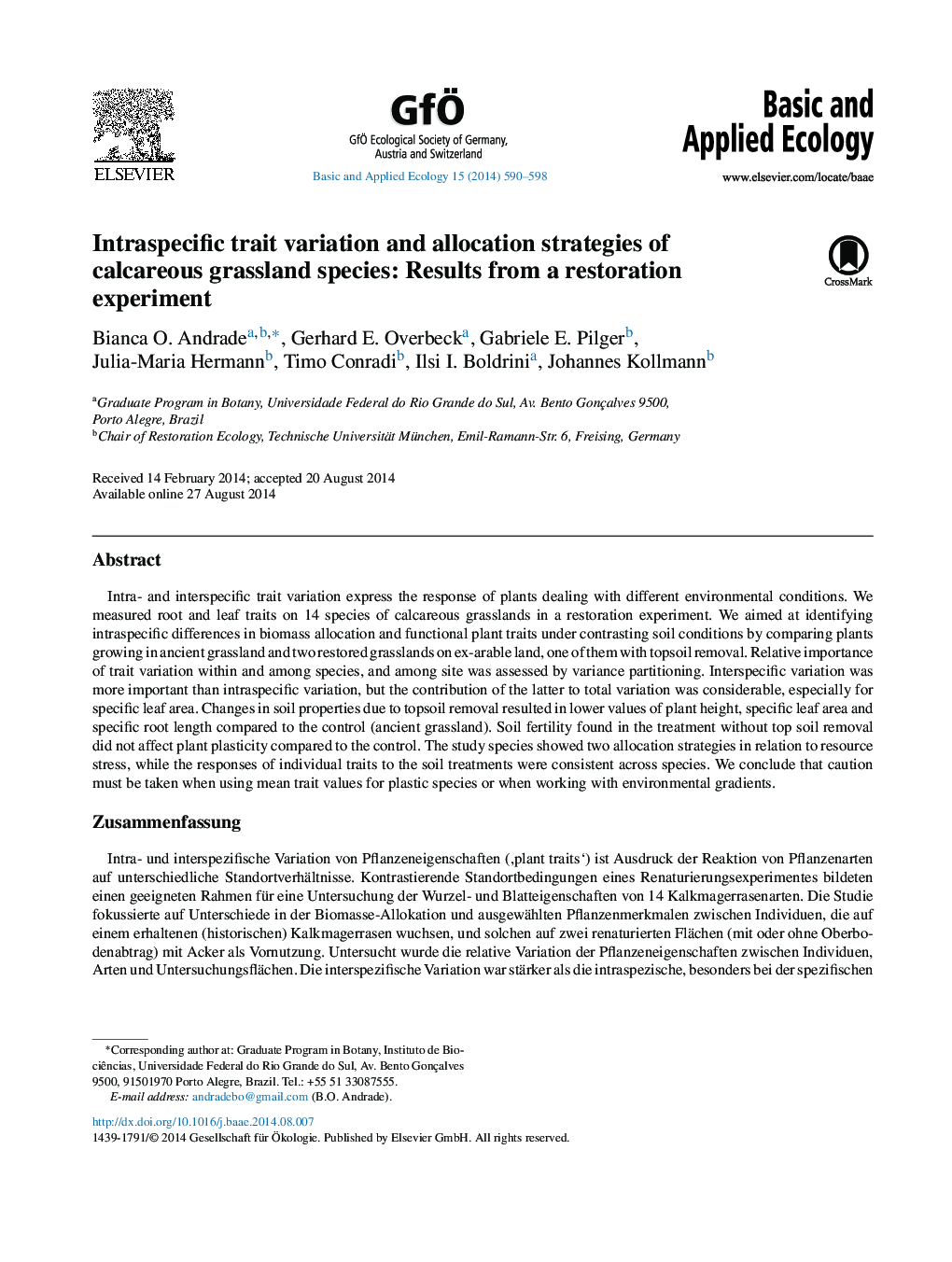| Article ID | Journal | Published Year | Pages | File Type |
|---|---|---|---|---|
| 4384021 | Basic and Applied Ecology | 2014 | 9 Pages |
Intra- and interspecific trait variation express the response of plants dealing with different environmental conditions. We measured root and leaf traits on 14 species of calcareous grasslands in a restoration experiment. We aimed at identifying intraspecific differences in biomass allocation and functional plant traits under contrasting soil conditions by comparing plants growing in ancient grassland and two restored grasslands on ex-arable land, one of them with topsoil removal. Relative importance of trait variation within and among species, and among site was assessed by variance partitioning. Interspecific variation was more important than intraspecific variation, but the contribution of the latter to total variation was considerable, especially for specific leaf area. Changes in soil properties due to topsoil removal resulted in lower values of plant height, specific leaf area and specific root length compared to the control (ancient grassland). Soil fertility found in the treatment without top soil removal did not affect plant plasticity compared to the control. The study species showed two allocation strategies in relation to resource stress, while the responses of individual traits to the soil treatments were consistent across species. We conclude that caution must be taken when using mean trait values for plastic species or when working with environmental gradients.
ZusammenfassungIntra- und interspezifische Variation von Pflanzeneigenschaften (‚plant traits‘) ist Ausdruck der Reaktion von Pflanzenarten auf unterschiedliche Standortverhältnisse. Kontrastierende Standortbedingungen eines Renaturierungsexperimentes bildeten einen geeigneten Rahmen für eine Untersuchung der Wurzel- und Blatteigenschaften von 14 Kalkmagerrasenarten. Die Studie fokussierte auf Unterschiede in der Biomasse-Allokation und ausgewählten Pflanzenmerkmalen zwischen Individuen, die auf einem erhaltenen (historischen) Kalkmagerrasen wuchsen, und solchen auf zwei renaturierten Flächen (mit oder ohne Oberbodenabtrag) mit Acker als Vornutzung. Untersucht wurde die relative Variation der Pflanzeneigenschaften zwischen Individuen, Arten und Untersuchungsflächen. Die interspezifische Variation war stärker als die intraspezische, besonders bei der spezifischen Blattfläche. Oberbodenabtrag führte zu geringerer Pflanzenhöhe, und niedrigeren Werten für spezifische Blattfläche und spezifische Wurzellänge verglichen mit dem historischen Magerrasen. Die höheren Nährstoffgehalte der Ackerflächen ohne Bodenabtrag beeinflussten die Plastizität der Pflanzenarten nicht. Die Magerrasenarten zeigten zwei unterschiedliche Allokationsstrategien als Reaktion auf ungünstige Bodenverhältnisse, während die Veränderungen der einzelnen Pflanzeneigenschaften bei allen Arten ähnlich ausfielen. Die Ergebnisse legen nahe, dass die Verwendung von gemittelten Werten von Pflanzeneigenschaften bei plastischen Arten entlang von Umweltgradienten problematisch ist.
